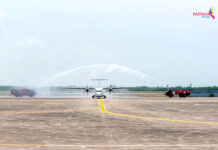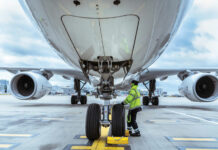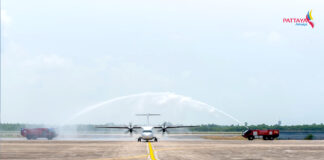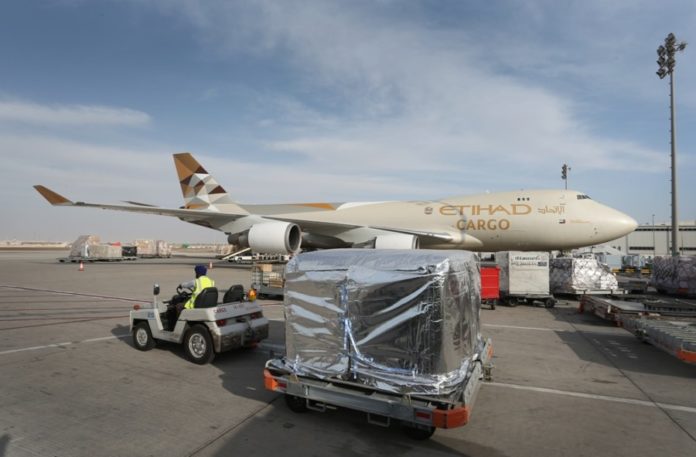

2016 was a tough year for Middle East airfreight with regional growth dragged lower by economic and capacity concerns.
Back in July, according to the International Air Transport Association (IATA) demand in the region grew by 6.7 per cent year-on-year.
Pretty strong compared to most of the rest of the globe but much lower than the 14 per cent recorded annually between 2012 and 2015.
The month of August was even worse with the 1.8 per cent increase recorded then being the slowest since July 2009. September dipped even further when growth could only go up by 1.2 per cent.
Analysts and regional experts were blaming weak volumes on routes between the Middle East and Asia and the Middle East and North America. Excess airfreight capacity in the region, the impact of cheaper seafreight and the volatility of world trade were identified as the main culprits.
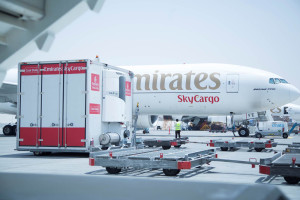

However, as the year ended hope began to return. There was a 9.2 per cent increase in demand in October and then a 7.8 per cent surge in November.
2017 awaits with most of those economic and market concerns still at the forefront. Political and military tensions in the region remain high and there is great uncertainty what Brexit and new US President Donald Trump will mean for global trade relationships and volumes.
Individual operators in the region however appear optimistic, with new markets, sectors and continued investment helping them cope with the uncertainty.
Etihad Cargo recently announced that it had recorded its busiest month ever in October with 53,785 tonnes of cargo. It was helped by growth in perishables traffic from Africa, US inbound and outbound traffic and volumes from Europe to Asia Pacific.
It has also expanded its services to keep growth rising this year. This includes new freighter services between the UK’s East Midlands Airport and Stansted Airport to Copenhagen in Denmark.
Whilst it shows confidence in the economic prospects of Europe, Emirates SkyCargo is being bullish about the US. In December, it expanded its cargo network with the launch of a daily service to Fort Lauderdale in Florida. It offers up to 15 tonnes of bellyhold capacity for goods including healthcare equipment, electronics, shipping spares and food such as cheese and fruit.
Providing further proof in the resilience of the UAE to 2016’s challenges comes recent figures from Dubai based cargo handler dnata. It recorded 419,133 tonnes of cargo at Dubai International Airport last year, up eight per cent on the figure for 2015.
Its new customer service centre for its export cargo customers has helped its numbers with dedicated staff, new export counters, a special cargo acceptance area and a cargo integrated control centre proving successful with clients.
“It’s been a challenging year but our team has demonstrated unwavering commitment to delivering the highest standards to our customers,” says dnata airport operations divisional vice president, Steve Allen (pictured above).
He adds: “We have worked hard to stay agile, efficient and innovative, while never compromising our safety and operational excellence. 2017 will require us to be even more tactile and responsive to the needs of the market, and stay on top of our game to ensure a robust year ahead.”
Elsewhere in the Middle East those buzzwords – responsive, agile and innovative – are also being effectively displayed.
Pharmaceuticals are very much in the thinking of Turkish Cargo, the freight arm of Turkish Airlines. It has recently been awarded IATA’s Center of Excellence for Independent Validators (CEIV) in Pharmaceutical logistics at its Istanbul hub.
The carrier has also created a dedicated team to ensure that the “integrity of the cold chain and products is preserved through transportation”.
As part of this Turkish Cargo, which has 3,000 square metres of special storage areas covering four different temperature ranges, is planning to introduce a ‘thermal dolly’ service to protect shipments from the heat on the airport tarmac.
Perishables are also very much in vogue. Saudia Cargo is gearing up for bumper freighter flights from Nairobi to Amsterdam Airport Schiphol this February as it is the peak season window for Kenyan fresh-cut flowers being moved into Europe.
2017 could be the year when airfreight into and out of Iran truly begins to blossom. There are uncertainties around new US President Donald Trump’s attitude to the sanctions lifting nuclear agreement which was sealed by the Obama administration. The prospect that he tears up the agreement is very real.
However, Iran Air is not waiting and wondering. It has tied up an agreement for 80 aircraft from US manufacturer Boeing. That is in addition to the order for 118 aircraft from European manufacturer Airbus earlier in 2016.
That is good news for passenger traffic but also for cargo. There are issues with airport infrastructure, ground handling, onward logistics and staff training but demand to get involved in a nation whose economy is worth an estimated $400 billion and with an 80 million strong population is growing.
IAG Cargo is offering bellyhold capacity to the capital Tehran, with Korean Air and Uzbekistan Airways also carrying out regular cargo flights. Freight forwarder Davies Turner is also operating in Iran and reporting growing demand.
A resurgent Iranian air cargo sector would certainly challenge the UAE carriers and no doubt bring even more pressure on stretched capacity in the region.
The Middle East region has had a tough spell but through self-help and identifying new areas of service and markets it is beginning to bounce back.
How confident are they? Well, recent press reports about Etihad Cargo looking to take a stake in German giant Lufthansa certainly gave the new year a lift. Etihad has denied that they are looking at taking such a stake but even the notion that such a deal could take place is fascinating.
It shows that the growth of the Middle Eastern carriers compared to those in Europe is continuing to develop and evolve further. 2016 was last year. 2017 offers fresh ground for faster growth.


